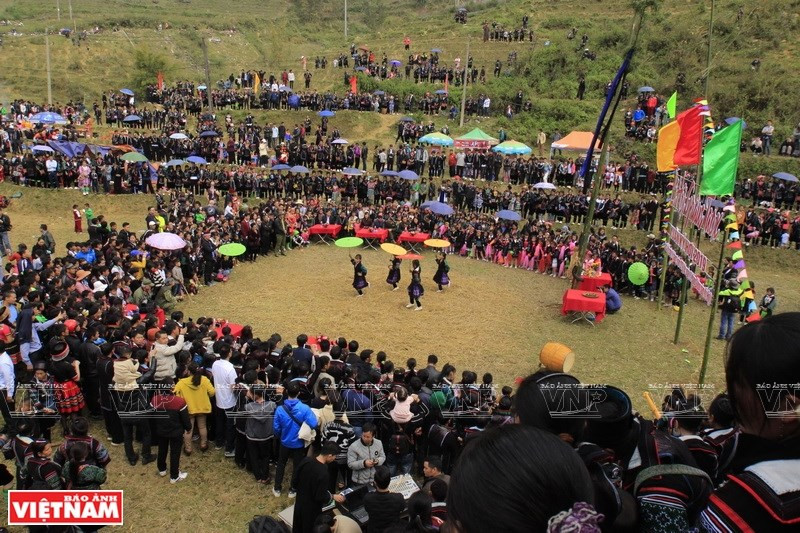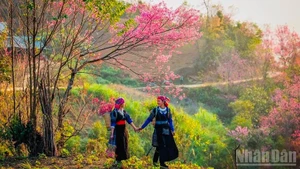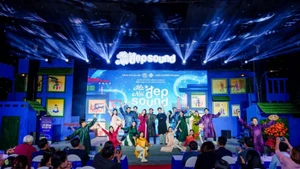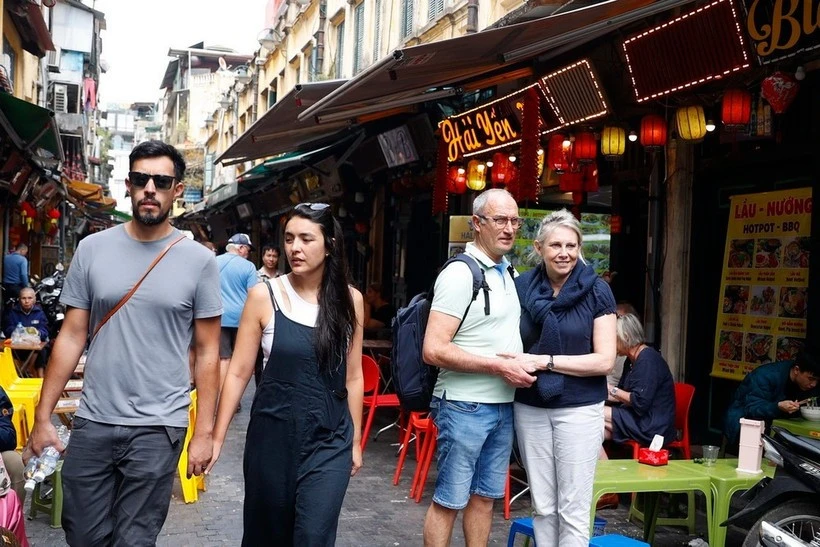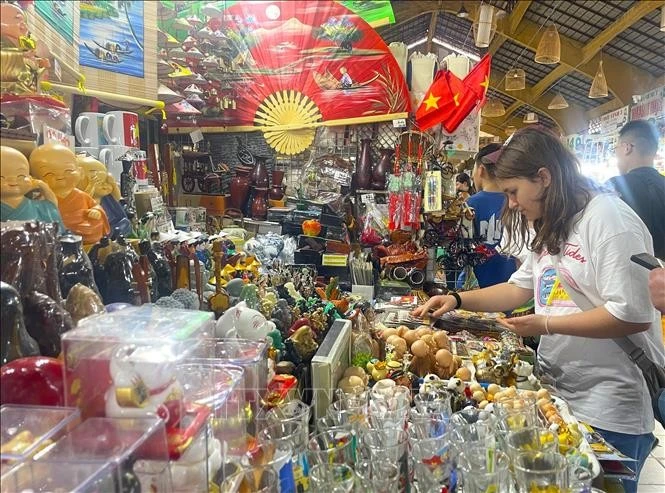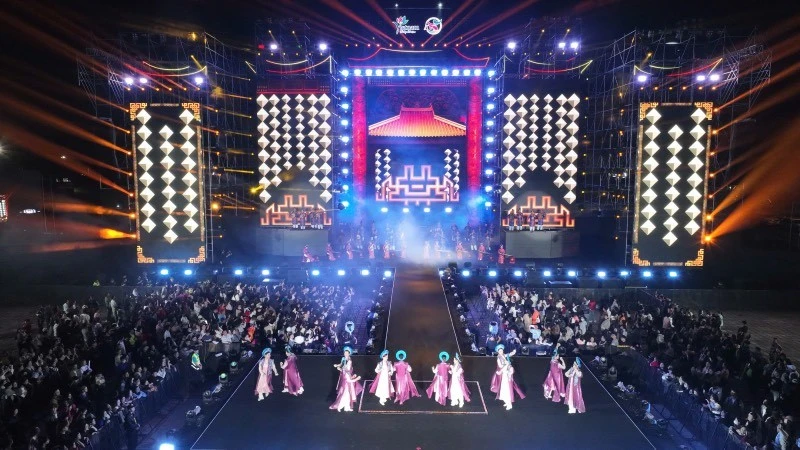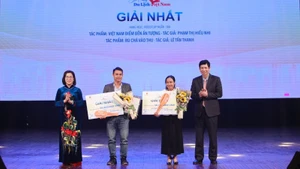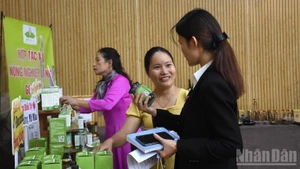According to their traditional custom, Gau Tao Festival was often held by the wealthy Mong families of the village to pray for favourable weather conditions, health, and happiness. As time passed by, the festival becomes a festive day for the whole village to welcome the new year and new spring.
The Gau Tao festival is usually organised between the first and 15th days of the first lunar month.
It provides a chance for the elders to gather and wish each other longevity and bless their descendants with luck and health; and for girls and boys to make a date and pray for happiness all year round.
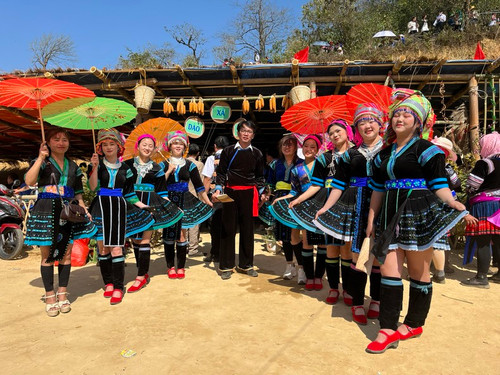 |
| The festival features typical cultural and spiritual features of Mong ethnic group |
It is also an occasion for Mong people who live, work, or study far from home to reunite with their families and welcome the new year before entering a new cultivation and livestock breeding season.
The festival features typical cultural and spiritual features of Mong ethnic group, which can be seen through group activities.
On the festival day, amidst the joyful musical space of flutes and ‘khen’ (panpipe), young Mong men are assigned to prepare for the feast, while young Mong women gather together to show off their embroidery skills and new dresses, which are tailored with the typical patterns of their ethic group, and join folk dances.
The main activities of the festival are held around the ‘neu’ tree — a tall bamboo pole with red garment strips which is a scared symbol during the new year festival.
The Mong people believe that the Neu tree serves as a bridge to link them with their gods. To prepare for the festival, the villagers select a fine, straight bamboo tree to make into a 'neu' tree, tying two ribbons of black and red linen on its top with the hope of receiving luck.
In 2020, Gau Tao Festival was recognised as a national intangible cultural heritage. The local Party Committee of Lai Chau Province issued Resolution No. 04-NQ/TU, dated February 17, 2021, on preserving and promoting the traditional cultural identities of ethnic groups while fostering tourism development in the 2021-2025 period, with a vision to 2030. Under the document, Gau Tao Festival was held at the district level in 2023.
In Lai Chau Province’s Phong Tho district, Gau Tao Festival has been developed into a unique local cultural event, held annually when spring arrives. It attracts the participation of communes where Mong ethnic people reside.
The festival not only opens opportunities to strengthen cultural exchange between ethnic groups and communities in the district and honour the cultural values of the Mong people in Phong Tho District, as well as the Vietnamese Mong community in general, but also helps to promote local tourism to domestic and international tourists.
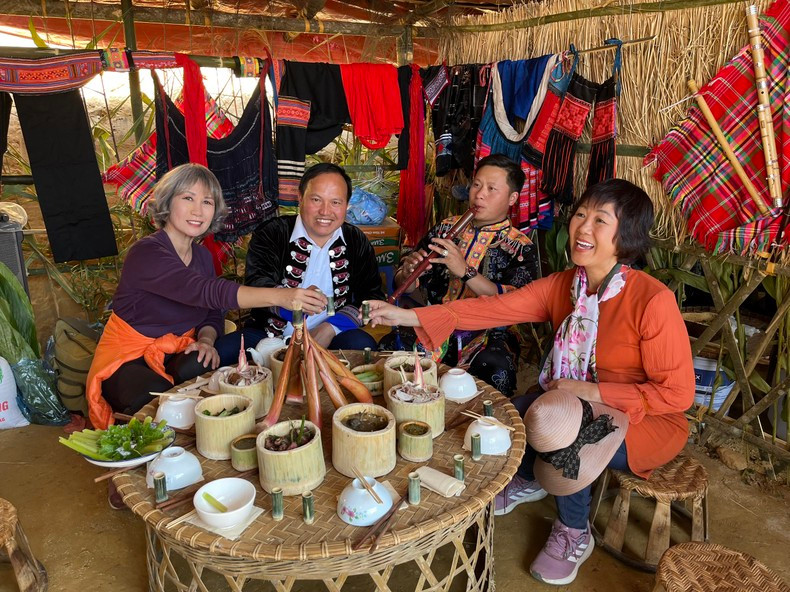 |
| Indigenous dishes of the Mong group are sold to serve the locals and tourists at the festival |
This year’s Gau Tao Festival in Phong Tho District gathered eight delegations from seven communes including Hoang Then, Dao San, Pa Vai Su, Tung Qua Lin, Mu Sang, Lan Nhi Thang, Sin Suoi Ho, and Sung Phai, where 77% of the Mong ethnic people live.
Taking place on February 17 and 18, the festival featured various activities imbued with the cultural identity of the Mong people, such as art performances, a contest on assembling panpipes, a brocade embroidery competition, a ‘thang co’ (horse hot pot) cooking contest, and numerous exciting sporting events.
At the festival, a lot of handicraft products and indigenous dishes of the Mong group are sold to serve the locals and tourists.
These activities contributed to consolidating the solidarity among the Mong ethnic community, as well as strengthening cultural exchange between the Mong ethnic group and other ethnic groups in the region.
